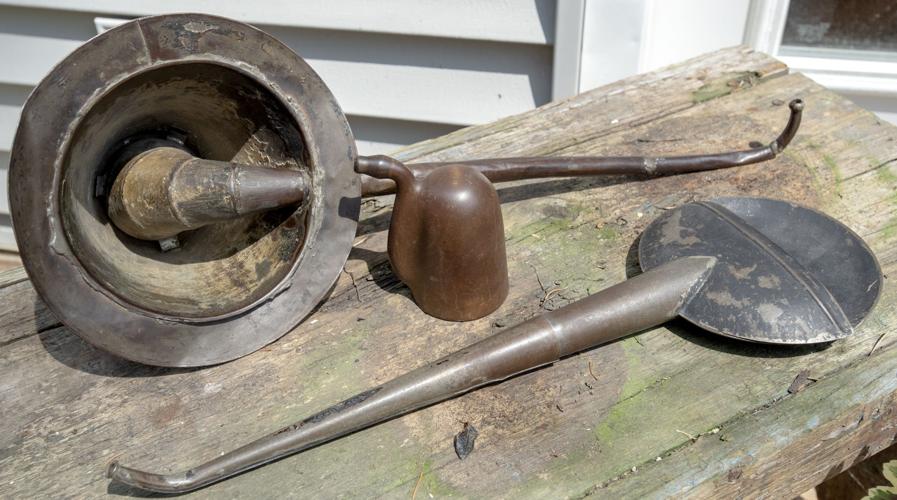CHAMPAIGN — Imagine you’re living hundreds of years ago, and you’re hard of hearing.
Aside from having people yell stuff toward your ear, what were your options?
Well, you could get yourself a kind of hearing-aid forerunner called an ear trumpet, like 91-year-old Champaign audiologist John Weaver did — not that he ever used his collection of ear trumpets to help his own hearing.
He’s got a modern hearing aid for that. And he recently passed along his ear trumpets to the University of Illinois Department of Speech and Hearing Science, where he received his bachelor’s and master’s degrees in the 1950s and his doctorate in 1970.
Weaver said he wanted to find a home for his ear trumpets where they’d be used, and that’s exactly what the UI is going to do with them.
They’ll be displayed in the department and their story will be included in a class covering the history of communication sciences and disorders, according to the UI.
Ear trumpets aren’t anything like today’s hearing aids, which use electronics to amplify sound and improve clarity. But some old ear trumpets are still around as collectibles, and new versions are sold online as gag gifts.
Weaver recalled wanting an old ear trumpet as a gift when he earned his doctorate, and his mother-in-law went in search of one.
At his son’s home this past week, Weaver demonstrated how one of the ear trumpets was used: It has a bell shaped opening at one end for the sound to enter. It then travels up a long tube and exits into the user's ear from a smaller opening at the other end.
His ear trumpets date back to the early 1800s, he said, and the one he was holding could be taken apart in two pieces “so it could go into saddle bags.”
Weaver is retired from the Champaign school district, where he was the director of special education, and before that worked as a speech pathologist in several Champaign schools.
He grew up on the South Side of Chicago, served in the Army during the Korean War and came to the UI on the GI bill. His late wife, Ruth, held a bachelor’s degree in speech correction and a master’s degree in education, both from the UI, and also worked for Champaign schools.
Ear trumpets were around even hundreds of years before the ones Weaver donated, said Ron Chambers, a speech and hearing science professor. They came in all kinds of shapes and materials, he said.
The idea was that by collecting sound at a larger end and sending it up a tube to the smaller end inserted into the ear, you could improve sound pressure, “but not a lot,” he said.
But back then, “it was the best you could do,” Chambers said.
Put it this way: Chambers said ear trumpets were likely an improvement over cupping your hands behind your ears when someone was talking to you, but comparing them to today’s hearing aids would be like comparing two cans and a string to a cellphone.
Chambers said it’s good for today’s students to see what people once used to try to alleviate hearing loss, so they can better appreciate what electronics and digitization have made possible.
“That’s how far we’ve come,” he said.













